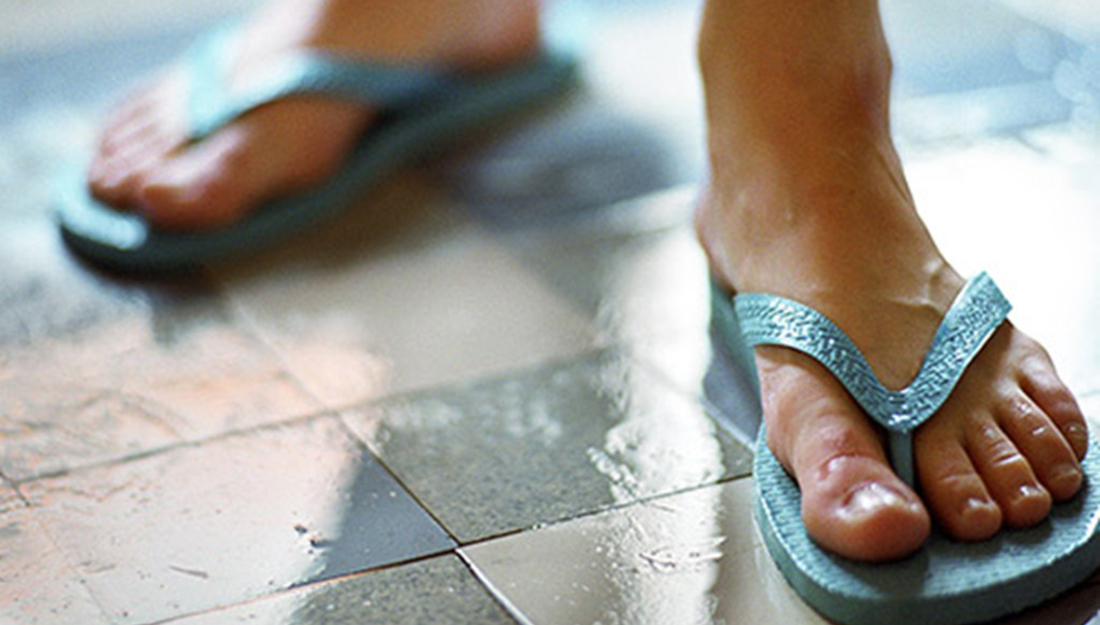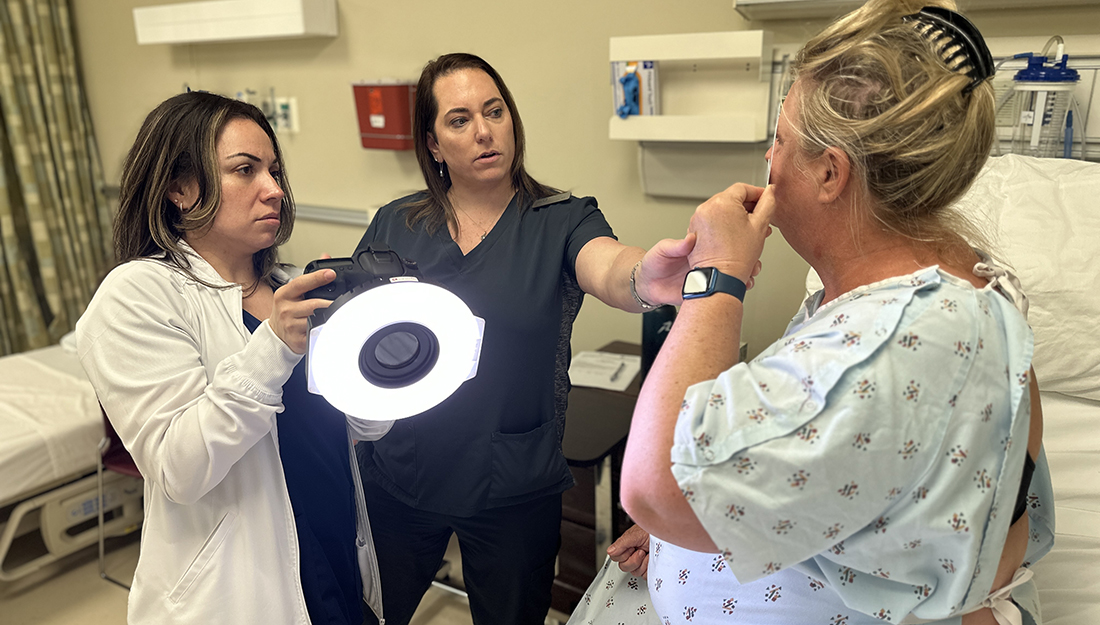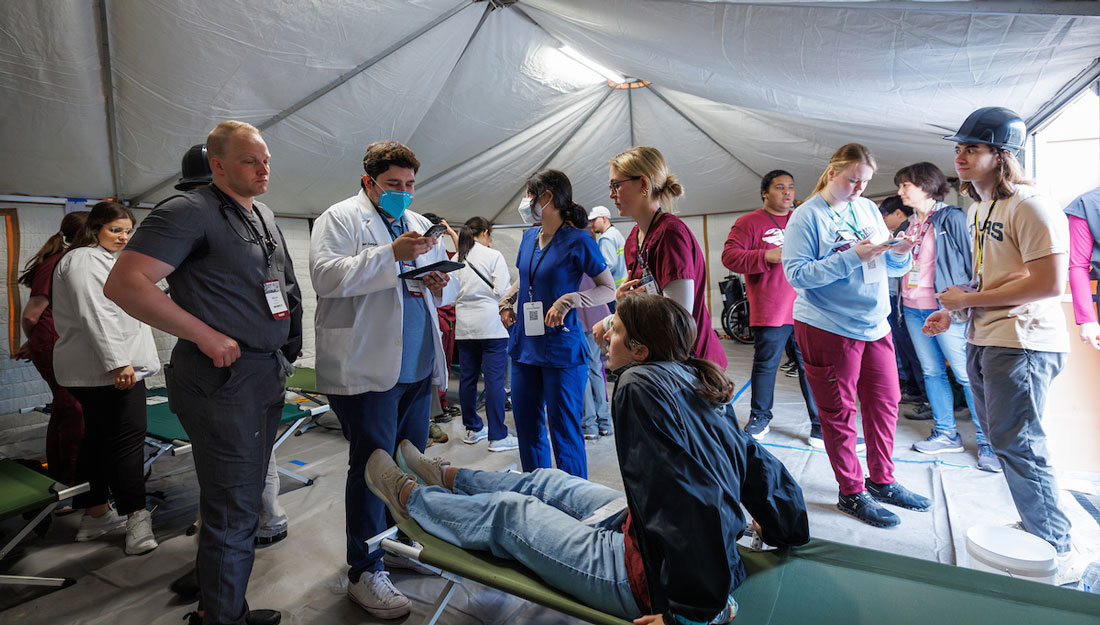- Dominic Hernandez
- Community, Nursing, Show on VR homepage, Trending, You Asked
You asked: What is a staph infection?
Staph is as common as it is dangerous

Did you know that about 30 percent of the general population is colonized with staph (Staphylococcus aureus)? This means that the bacteria is present, but it is not causing an infection. However, many others aren’t as lucky: 1.2 million Americans get symptomatic staph infections each year that require medical attention. Experts from the Texas A&M College of Nursing dig deeper into staph and talk about what to look for and the best ways to avoid these infections.
What is a staph infection?
Simply put, a staph infection is when the body has an adverse reaction to the staph bacteria. It can be from contaminated food, or, more commonly, it can enter the body from a skin lesion or a cut.
“We look for anything from a rash that looks infected to a boil or a pimple,” said Chelsey Rosen, BSN, RN, clinical assistant professor at the Texas A&M College of Nursing. “The patient could have a fever and chills also, but at the site of the infection there could be some pain or a pus-filled boil or blemish.”
Let’s pretend you spent the day out hiking or walking your dog. If you fall, scrape your elbow or knee or simply get a mosquito bite, that is a wound that can potentially be an entry site for staph. If you have the bacteria on your hands (that you may have picked up from a doorknob or other surface) and scratch the wound, you may have started a staph infection in your body.
Staph infections can range from minor skin problems to serious health concerns. They can cause painful boils, rashes or ulcers but can also cause a rare complication called toxic shock syndrome, which is the life-threatening condition that results from the body’s response to a harmful bacteria. Toxic shock syndrome can cause sepsis, a blood infection that can be deadly if not treated promptly.
Staph hot-spots
Although going to the gym and getting in shape is atop of everybody’s (eventual) to-do list, if you’re not practicing good hygiene, you could be at risk for contracting staph.
“We see a lot of staph infections in athletic facilities and locker rooms,” said Martin Mufich, MSN, RN, clinical assistant professor at the College of Nursing. “Staph can live on surfaces or on clothing or towels, so it’s important to make sure that you’re wearing proper footwear in the showers, having clean towels and clothing and avoiding sharing athletic equipment (such as helmets, goggles or sweatbands) with teammates or gym partners.”
Another common place for staph infections is in hospital settings. When any health care provider sees multiple patients within a short period of time, they run the risk of transferring pathogens, including staph.
“MRSA (methicillin-resistant Staphylococcus aureus) is a problem in hospital settings,” Rosen said. “It’s a ‘superbug’ and is resistant to common treatment, and it requires more aggressive treatment and antibiotics to treat.”
Mufich also stressed the importance of patients being proactive about their health, especially when it comes to checking potential staph infection(s).
“If you’re in a clinic setting and you have a rash or boil, assume that it could be staph and treat it with the same amount of caution. Be sure to tell your provider,” Mufich said. “Also, if you want to be cautious, you can kindly ask your provider to perform a sterile technique, wear gloves or simply scrub their stethoscope.”
Preventing staph
The best way to prevent yourself from getting staph infections is the same way to prevent most infections—hand washing and other basics of good hygiene.
“Practicing proper hygiene is the best defense against staph infections and any other illnesses,” Rosen said. “Keep alcohol-based hand sanitizer nearby, use disinfecting wipes on surfaces around your home and make sure you’re cleaning any open wounds with soap and water and covering with bandages.”
Also, lifestyle changes can help build up your immune system. In order to keep your body working most effectively, make sure you’re getting enough sleep and nutrients—especially if your body is temporarily weakened by exercise.
If you have a rash or cut that is beginning to swell up, has redness or puss or is not going away, be sure to go see a health care provider. Especially if you have prior conditions that weaken your health, don’t just take a wait-and-see approach.
“Anybody immunocompromised, diabetic or asthmatic should err on the side of caution when it comes to potential infections since they could have a harder time fighting it,” Rosen said. “If you have an abscess or boil, you should go see your provider and get it drained. Your body’s first sign of an infection is inflammation and fever, so those are clear indicators that you need to go to your health care provider.”
Media contact: media@tamu.edu


